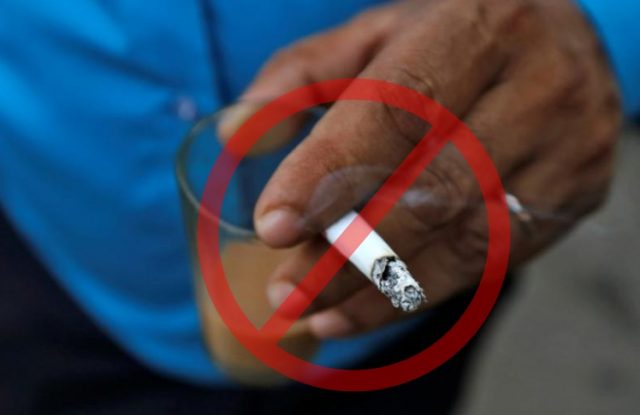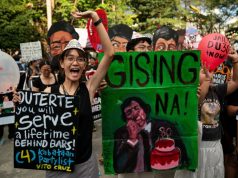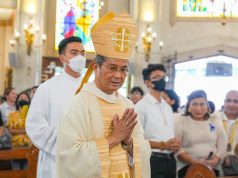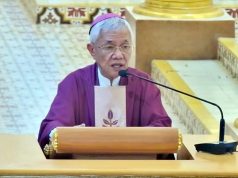MANILA – President Rodrigo Duterte has signed an executive order banning smoking in public places, Health Secretary Paulyn Ubial disclosed Thursday, adding that the order was signed on May 16, but she had just received her copy.
What could it look like if it were patterned after Davao City’s anti-smoking ordinance?
The New Comprehensive Anti-Smoking Ordinance of Davao City, enacted in September 2012, was approved by Mayor Sara Duterte, at a time President Duterte was still vice mayor.
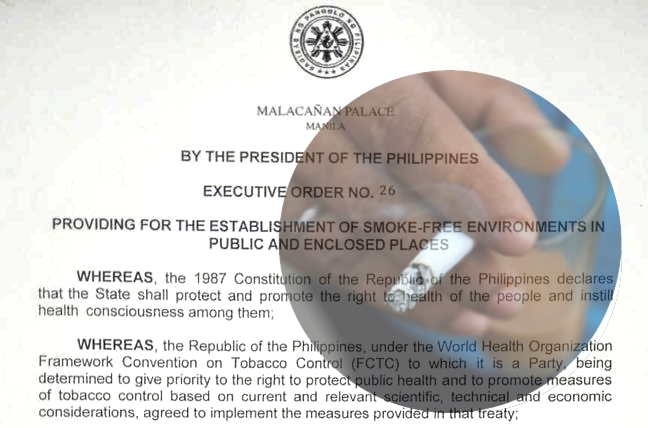
The ordinance makes it unlawful for any person to smoke or to allow smoking of any tobacco product, or the use of electronic device systems, shishas, and the like, in all public and government-owned vehicles, as well as in all “accommodation and entertainment establishments”, workplaces, enclosed or partially enclosed public places, public buildings, and public outdoor spaces.
Only in designated smoking areas is smoking allowed.
Smoking covers lighting and/or puffing of a cigarette, cigar, tobacco product, electronic device system, shisha, and the like.
Smoking also covers the possession of any lit cigarette, cigar, or tobacco product, and the possession of any operated electronic device system, shisha, and the like.
The ordinance also prohibits knowingly allowing, abetting, or tolerating smoking in places outside of duly designated smoking areas.
Refusal to allow the entry of the Anti-Smoking Task Force or its deputized enforcers inside a venue to implement, monitor, inspect, and enforce the ordinance is prohibited, as well.
Where is smoking banned?
1. Accommodation and entertainment establishments – These include restaurants, fast food joints, eateries, hotels, motels, lodges, inns, boarding houses, disco houses, videoke bars, resto-bars, and movie houses.
2. Enclosed or partially enclosed public places – These include gas stations, banks, malls, shopping or business arcades, town squares, terminals, airports, seaports, schools, places of worship, hospitals, cinemas, gyms, covered courts, funeral homes, parlors, barber shops, cockpits, gaming areas, recreational facilities, pedestrian footbridges, indoor car parks, waiting sheds, sidewalks, and other places where people usually congregate.
3. Public conveyance – These include vehicles – whether mobile or stationary – such as jeepneys, buses, trains, vans, taxis, airplanes, ships, tricycles, motorcycles, other public utility vehicles.
4. Public buildings – These are buildings owned by the government, or owned by a private person but used, rented, or occupied by the government, and buildings
used or controlled exclusively for public purposes by the government.
5. Public outdoor spaces – These include parks, playgrounds, sports grounds, sports centers, gaming areas, cockfighting areas, healthcare/hospital compounds, cemeteries, gardens, resorts, beaches, pools, markets, streets, sidewalks, parking areas, walkways, entrance ways, waiting areas, and stairwells.
6. Workplaces – These are defined as an area – whether permanent or temporary – where a person performs duties of work, regardless of whether it is compensated or voluntary. These include private offices, common areas, other areas generally used during work, company-owned vehicles used for transporting employees and guests, and vehicles used in the course of work.
Where is smoking allowed?
A designated smoking area is an outdoor space aside from those where smoking is banned, and has the following requirements.
– Open
– Has no permanent or temporary roofs or walls
– Located in an outdoor area
– Not larger than five square meters
– Not within ten meters of entrances, exits, or any places where people pass or congregate
– Does not have more than one designated smoking area
– Will not serve food or drinks
– Has a highly visible “Smoking Area” sign, with a graphic depiction and explanation of the ill effects of smoking and of exposure to secondhand smoke; the sign cannot have any mark, device, word, or image associated with any tobacco company or product
Citation tickets
The Philippine National Police and other enforcers can apprehend violators and issue citation tickets. A citation ticket contains the name and address of the violator, the violation committed, and its corresponding penalty.
Penalties
– First offense: P1,000 or one month imprisonment, or both
– Second offense: P2,500 or two months imprisonment, or both
– Third and subsequent offenses: P5,000 or four months imprisonment, or both
If the violator is a minor, a Social Welfare and Development Officer will meet with him/her and his/her parents or guardians for smoking cessation counseling and for inclusion in a diversion and rehabilitation program.
No-contest provision
Persons apprehended who do not wish to contest the violation and are willing to pay the penalty prior to the filing of formal charges with the court are allowed to pay a penalty worth P500 with the City Treasurer’s Office to avoid being criminally prosecuted within three days from apprehension. Otherwise, the case will be prosecuted in court.
After the penalty is paid, smoking cessation counseling is required.
No smoking signs
The aforementioned accommodation and entertainment establishments have to display a “This is a non-smoking establishment” sign. They must not have ashtrays and other receptacles for cigarette refuse. Selling of cigarettes or any tobacco product is prohibited.
Public, government-owned, and company-owned vehicles must also have a “No smoking” sign prominently displayed.

